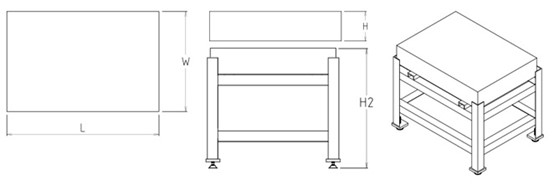تشرینی دووەم . 24, 2024 20:59 Back to list
Exploring Various Instruments for Accurate Measurements in Diverse Applications
Different Measuring Tools An Essential Guide
Measuring tools are indispensable instruments in various fields, including construction, science, arts, and even daily life. They enable us to acquire accurate measurements, which are essential for precision, safety, and efficiency. This article explores different measuring tools, their types, uses, and significance in various domains.
1. Linear Measuring Tools
Linear measuring tools are used to determine distances or lengths. The most common examples include
- Tape Measure This flexible tool is widely used in construction and tailoring. It typically has both metric and imperial units, allowing for versatile measurements. - Ruler A stiff, straight measuring device, often made from plastic or metal, rulers are commonly used in schools and offices for drawing lines and measuring short distances. - Caliper Used for precise measuring, calipers can measure internal and external dimensions as well as depth. They are widely used in mechanical and engineering applications.
2. Angle Measuring Tools
In many fields, it is crucial to measure angles precisely. Tools that serve this purpose include
- Protractor A semi-circular tool typically used in educational settings, protractors help measure angles in degrees. They come in various sizes and are useful for geometry. - Angle Gauge This tool is typically used in carpentry and metalworking for measuring or setting angles accurately.
3. Volume Measuring Tools
Volume measuring tools are essential in cooking, science experiments, and construction
. A few common tools include- Graduated Cylinder A fundamental tool in laboratories, it allows for the precise measurement of liquids. The clear markings on the side ensure accuracy in various scientific experiments. - Measuring Cup In culinary applications, measuring cups help achieve the correct proportions for recipes. They come in different materials, including glass, plastic, and metal, and are often labeled for both metric and non-metric units.
4. Weight Measuring Tools
Weight measurement is crucial in various industries, especially in food production, pharmaceuticals, and trade. Common weight measuring tools include
different measuring tools

- Scale Scales can be analog or digital, and they measure weight accurately. They are used in grocery stores, kitchens, and laboratories. - Balance A more precise instrument used mainly in laboratories, balances determine weight by comparing the mass of an object against known weights.
5. Temperature Measuring Tools
Temperature control is crucial in many sectors, such as food safety, pharmaceuticals, and manufacturing. Tools for measuring temperature include
- Thermometer There are various types of thermometers, including digital, mercury, and infrared. Each serves the purpose of measuring temperature in different contexts, from cooking to industrial applications. - Thermocouple This is a more advanced instrument used in scientific research and industrial settings to provide accurate and fast temperature readings.
6. Specialized Measuring Tools
Some professions require specialized tools tailored to specific needs. Examples include
- Laser Distance Measurer This technology uses lasers to calculate distances with a high degree of accuracy. It's particularly useful in construction and large-scale measurement jobs where traditional tape measures may be cumbersome. - Multimeter Electronic technicians use multimeters to measure voltage, current, and resistance, helping diagnose electrical problems effectively.
7. Importance of Accurate Measurement
The importance of accurate measurement cannot be overstated. In construction, accurate measurements ensure that buildings are safe and fit for purpose. In science, precision is vital for reproducibility in experiments. In cooking, the right proportions can be the difference between a delicious dish and a culinary disaster.
Additionally, accurate measurements lead to better efficiency and cost savings. In business and manufacturing, reducing errors through precise measurement can result in significant financial benefits.
Conclusion
Different measuring tools play critical roles across various domains, serving essential functions that ensure quality, safety, and efficiency. Understanding the types of measuring tools available, their uses, and their significance helps us appreciate the importance of accuracy in our activities. Whether in science, construction, cooking, or daily life, measuring tools are vital instruments that enhance our ability to navigate the world thoughtfully and effectively. Embracing the proper tools can greatly improve our work and personal projects, ultimately leading to success and satisfaction in our endeavors.
-
Why Metric Trapezoidal Thread is Ideal for Precision Motion ControlNewsAug.05,2025
-
The Unique Properties of a Block of Granite for Industrial UseNewsAug.05,2025
-
The Role of Flanged Y Strainers in Preventing Pipeline ClogsNewsAug.05,2025
-
The Importance of Regular Calibration for Master Ring GagesNewsAug.05,2025
-
How a Cast Iron Surface Table Enhances Accuracy in ManufacturingNewsAug.05,2025
-
Comparing Different Check Valve Types for Optimal Flow ControlNewsAug.05,2025
Related PRODUCTS









